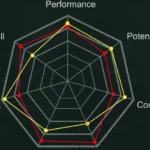In today’s rapidly evolving digital landscape, understanding coding and programming concepts has become an essential skill for the future. As artificial intelligence (AI) continues to shape various industries, teaching AI for kids and its underlying technologies can empower them to navigate this technology-driven world with confidence.
This article explores a creative and effective approach to introducing coding and programming concepts to kids through the lens of building AI projects.

Why Teach Kids About AI and Programming?
Before delving into the strategies for introducing coding and programming to kids through AI, it’s important to understand why this knowledge is valuable. AI is no longer confined to science fiction; it’s a tangible part of our daily lives. By teaching kids about AI and programming, we equip them with skills that will be increasingly relevant in the job market and society at large.
Engaging Introduction to AI Concepts
One of the challenges of teaching coding to kids is making it engaging and relatable. AI provides an excellent platform to capture kids’ interest. Start by explaining AI in simple terms: AI is like teaching a computer how to think and make decisions, just like humans. Use relatable examples, such as voice assistants like Siri or games that use AI algorithms to adapt to a player’s skills.
Interactive Learning through AI Games
Games are a fantastic way to introduce coding and programming concepts to kids. Create AI-driven games that require basic programming skills to play. For instance, develop a game where players have to program a virtual robot to navigate through obstacles or solve puzzles. This approach transforms learning into an interactive and enjoyable experience.
Visual Programming Languages
When introducing coding to kids, traditional programming languages might seem overwhelming. Visual programming languages, like Scratch or Blockly, provide a more intuitive way to learn programming concepts. These languages use blocks that kids can drag and drop to create code, making it easier to understand the building blocks of programming.
Project-Based Learning
Hands-on projects are a cornerstone of effective learning. Guide kids through AI-related projects that allow them to apply coding concepts in real-world scenarios. For instance, help them create a chatbot that answers questions or a virtual pet that responds to user interactions. Project-based learning fosters creativity and problem-solving skills.
Storytelling with AI
Combine coding with storytelling to ignite kids imagination. Challenge them to create interactive stories where AI characters respond to user input. This exercise not only teaches coding but also enhances their writing and communication skills. Kids can explore dialogue trees, decision-making algorithms, and character development while coding their narratives.
AI in Everyday Life
Show kids how AI is integrated into their daily lives. From recommendation algorithms on streaming platforms to self-driving cars, AI is everywhere. Discuss how coding powers these technologies and encourage kids to brainstorm ways AI could enhance their own lives or solve real-world problems they care about.
Collaborative Learning
Foster a sense of community by encouraging collaborative learning. Organize coding clubs or workshops where kids can work together on AI projects. Collaboration promotes teamwork, communication, and peer-to-peer learning, enhancing the overall learning experience.
Guest Speakers and Field Trips
Invite AI professionals to speak to kids about their work and its impact. Arrange field trips to tech companies or research institutions where kids can witness AI applications firsthand. These experiences provide tangible examples of how coding and programming can lead to exciting career paths.
Frequently Asked Questions (FAQs) About Introducing Coding and Programming Concepts to Kids through AI
How can coding and storytelling be combined to teach kids about AI?
Combining coding and storytelling allows kids to create interactive narratives where AI characters respond to user input. This exercise not only teaches coding but also enhances kids’ writing and communication skills. By coding their own stories with branching paths and decision-making algorithms, kids develop a deeper understanding of both programming and narrative structure.
decision-making. Teaching kids about AI is important because it equips them with skills that are increasingly relevant in today’s technology-driven world. As AI becomes more integrated into various industries, understanding its concepts prepares kids for future job opportunities and helps them navigate a technology-centric society.
How can AI concepts be explained to kids in a simple way?
AI concepts can be explained to kids in relatable terms. You can describe AI as teaching computers how to think and make decisions, similar to how humans do. Use familiar examples, such as voice-activated assistants like Siri or AI-powered games, to illustrate how AI works in their daily lives.
What are visual programming languages, and how do they help kids learn coding?
Visual programming languages, such as Scratch or Blockly, use graphical blocks that kids can drag and drop to create code. These languages provide a more intuitive way for kids to learn coding concepts, as they visually represent programming elements. This approach simplifies complex coding concepts and helps kids grasp the foundational principles of programming.
How can games be used to teach coding and programming to kids?
Games offer an interactive and engaging way to teach coding and programming. Create AI-driven games that require kids to use basic programming skills to play. For instance, design a game where players program a virtual robot to solve puzzles or navigate obstacles. This approach combines learning with fun and challenges kids to apply coding concepts in a practical context.
What is project-based learning, and how does it benefit kids learning coding and programming?
Project-based learning involves hands-on activities where kids work on projects that require them to apply coding and programming concepts to real-world scenarios. This approach fosters creativity, problem-solving skills, and a deeper understanding of coding principles. Through projects like creating a chatbot or a virtual pet, kids can see the direct application of their coding skills and gain a sense of accomplishment.
Conclusion
Introducing coding and programming concepts to kids through the lens of building AI projects offers a dynamic and engaging approach to education. By leveraging the fascination with AI and its real-world applications, educators can create meaningful learning experiences that equip kids with valuable skills for the future. As AI continues to shape the world around us, nurturing the next generation’s understanding of coding and programming is a step toward preparing them for the challenges and opportunities that lie ahead.
Join 25,000+ smart readers—don’t miss out!







